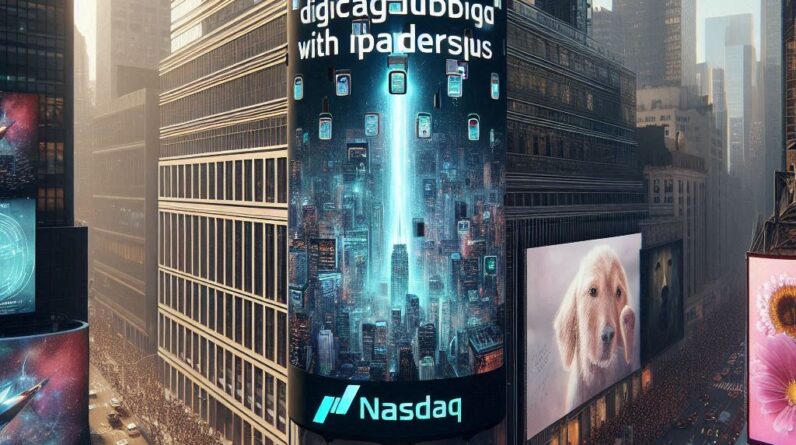
[ad_1]
In any industry, digital signage enables organizations to quickly and effectively deploy engaging content to specific locations for specific purposes. AI and ML will continue enhancing digital experiences, allowing businesses to adapt and curate personalized, engaging content relevant to the right audiences.
The modern customer experience (CX) is largely dependent on and influenced by digital experiences.
A study by Deloitte found that consumers are leveraging the benefits of in-store and online shopping to conduct research and find inspiration before making a purchase. In this study, shoppers revealed in-store displays motivated them 23% of the time compared to 32% with an online advertisement.
While brands have some influence over consumer behaviors, most of the shopping experience takes place with little to no direct intervention from a brand, leaving customers to form opinions and experiences on their own. This creates missed opportunities for brands to engage with customers and build brand loyalty.
As a result, there’s been a shift toward creating more customized brand and communications experiences with emerging technologies to close the gap between digital and in-person shopping—and, of course, the goal is to keep costs low, drive conversions and repeat business, and improve the overall customer experience.
This sets the stage for artificial intelligence (AI) and machine learning (ML), which have increasingly been added to business applications, drawing an increased focus from the general population. These emerging technologies are primed to enhance customer experiences when applied to digital signage systems. With innovations in AI and ML, digital signage software can become an even more powerful, flexible, cost-effective, and scalable solution capable of reaching and engaging various audiences and delivering impactful digital experiences.
This makes digital signage crucial for any organization’s omnichannel marketing strategy to help businesses optimize the customer experience. Armed with better systems, data, and analytics, organizations are better equipped to create more personalized experiences that drive outcomes.
Cloud lays the foundation for AI and ML advantage
Just 10 years ago, cloud-centric software architectures were emerging and gaining momentum within the industry. In the past, organizations were more likely to run on-prem servers with installed software and hardware, likely in a Windows-based market. Now, many customers have moved to cloud-hosted solutions and SaaS models, opening up the door for data communication growth across industries that will continue to adapt to the cloud at a faster pace and increased ROI in an intelligent, low-cost, device-based market.
The current, newer systems are more powerful, scalable, global, and secure for a wide range of market needs. As more customers have embraced the cloud, the rapid evolution of technology means legacy systems become antiquated much more frequently and in ways that are more obvious to customers. This is especially true in the digital signage market, which must be both visually and technically advanced to make an impact and draw engagement.
By nature, digital signage is a flexible medium to display customized content. With robust software, managing and updating a variety of content types is quick and straightforward. The right platform allows updates from any device, including mobile devices, and IoT helps to manage or monitor digital signage displays from a remote location. With a centralized, cloud-based content library, anyone with the right permission set can upload or store rich media assets and schedule them at any time.
Additionally, cloud-based solutions—and the evolution of hardware—have made it easier and more cost-effective for organizations to scale their digital signage networks to thousands of screens. In fact, scalability would not be possible if customers had to pay premium prices per unit. Low maintenance is also a must for lean IT teams with limited resources. Even larger companies benefit from increased productivity and efficiencies of low-maintenance devices.
Dynamic experiences drive engagement
AI and data insights help marketers quickly create high-quality campaigns that match the fast pace of changing consumer interests. Data-driven insights collected from previous campaigns show performance metrics, revealing impressions and conversion rates. This information is then used to make campaigns more effective.
And consumers are aware that their data is shaping their shopping habits. A study by McKinsey found 71% of consumers expect brands to personalize interactions and 76% of consumers are frustrated when that doesn’t happen.
For example, guests booking a stay at a high-end resort will anticipate customized itineraries based on their preferences. Hotels will go further to engage guests on site, using insights they can gather to shape their guests’ experience from the time they book their reservation to the time they enter their room and throughout their stay. Various communication channels, including digital signage, will be implemented to help round out these curated experiences by delivering personalized ads, recommendations, and marketing materials.
Digital signage not only provides brands with a channel to personalize ads and other comms, but the display screens also create engaging content that is dynamic, powerful, and customizable, making it easier to connect with audiences.
Measuring performance and results
In order for marketers to be able to optimize their campaigns and understand performance effectiveness, cloud-based digital signage software must have the ability to collect data that helps organizations easily understand key metrics and drive meaningful content creation. This heavily depends on a platform’s ability to track engagement and create reports to determine the best content to deploy at the right time to the right locations.
With an omnichannel approach to marketing, digital signage complements analytics gathered from other channels, enabling software users to share and track the same content across multiple platforms, including email communications, mobile apps, and online advertising. This allows a retailer to track metrics across their omnichannel campaign and determine target audience preferences to indicate where best to optimize their efforts.
In any industry, digital signage enables organizations to quickly and effectively deploy engaging content to specific locations for specific purposes. AI and ML will continue enhancing digital experiences, allowing businesses to adapt and curate personalized, engaging content relevant to the right audiences.
David Levin is the CEO of Poppulo, the leading communications and workplace experience software company. In 2005, David co-founded Four Winds Interactive (now merged into the Poppulo brand) with a vision for how digital technology would transform how businesses communicate and engage with customers and employees.
[ad_2]
Source link






